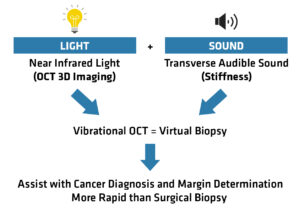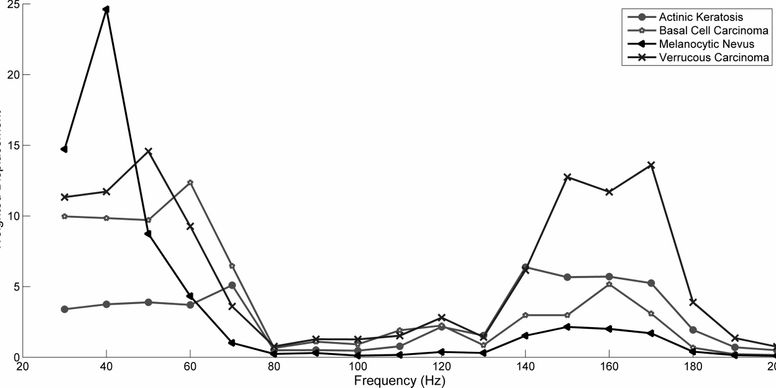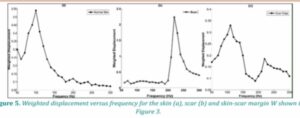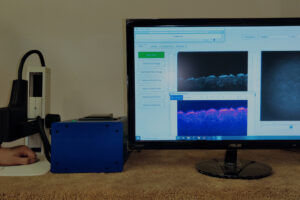“I just biopsy everything... not everyone wants a biopsy.”
“Is it cancerous or not? I don't want to wait for biopsy results.”
“Give me a stiffness map superimposed over an image.”
“Fillers and lasers are supposed to build collagen. Showing changes over time would help the physician and patient feel good about the cost/benefit of multiple treatments.”

Vibrational Optical Coherence Tomography (VOCT)
Vibrational OCT combines the techniques of OCT and Vibrational analysis to generate both an image and information about mechanical properties of the sample under test. Sound waves are used to generate vibrations.

Vibrational Virtual Biopsy
Changes in mechanical properties of ECM are known to accompany the onset and progression of several diseases including atherosclerosis, cirrhosis and cancer. Tissue stiffness changes with change in the mechanical properties. This difference between stiffness and thus modulus, can be used to differentiate lesions from normal tissues and perform a vibrational virtual biopsy.

Implant Characterization
Modulus mismatch between host tissue and implant material contribute to implant failure. The use of VOCT can help image and measure the mechanical properties of numerous natural and synthetic polymers.

Advantages Over Competing Techniques
- OptoScope 2.0™ is a next-generation material characterization device
- Scans the area of interest in less than 10 minutes from software setup to scan completion
- Sound and light is not felt by patient
- The non-invasive combination of infrared light and transverse vibrational waves create a detailed 2D and 3D image and preserves the area or sample being scanned.
- Measures tissue/material elasticity and viscosity non-invasively. No other characterization technique is known to track material changes in cellular components of human tissue or determine likelihood of failure in non-organic materials.
- OptoScope 2.0™ device can be calibrated against a gold standard
Applications:
- Vibrational Virtual biopsies for Moh’s surgical Procedure
- Identification of change in tissue stiffness for Cancerous lesions
- Characterization of tissues and implants
- Margins for skin lesions
- Identification of lesion types
- Identification of breast tissue biopsies
- Identification of corneal and scleral pathology
- Quantitative assessment of carotid artery behavior
- Identification of injection site blood vessels
- Quantification of tissue water content
- Analysis of dermal wound healing
- Mechanical Testing
